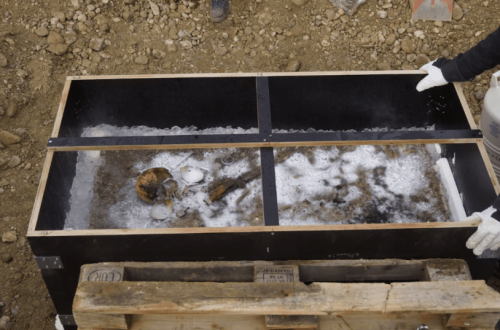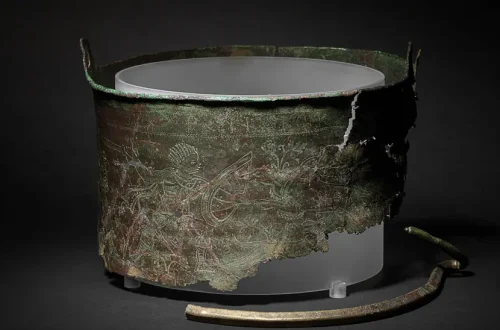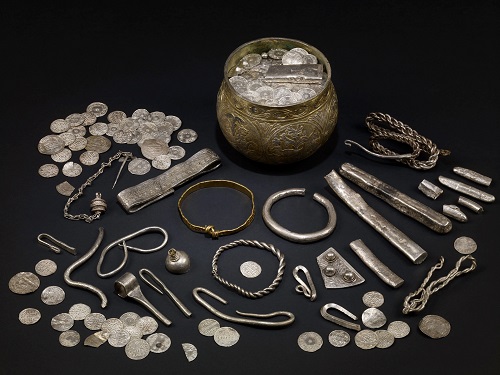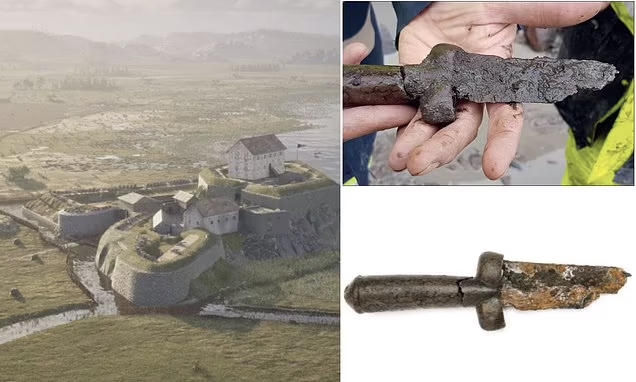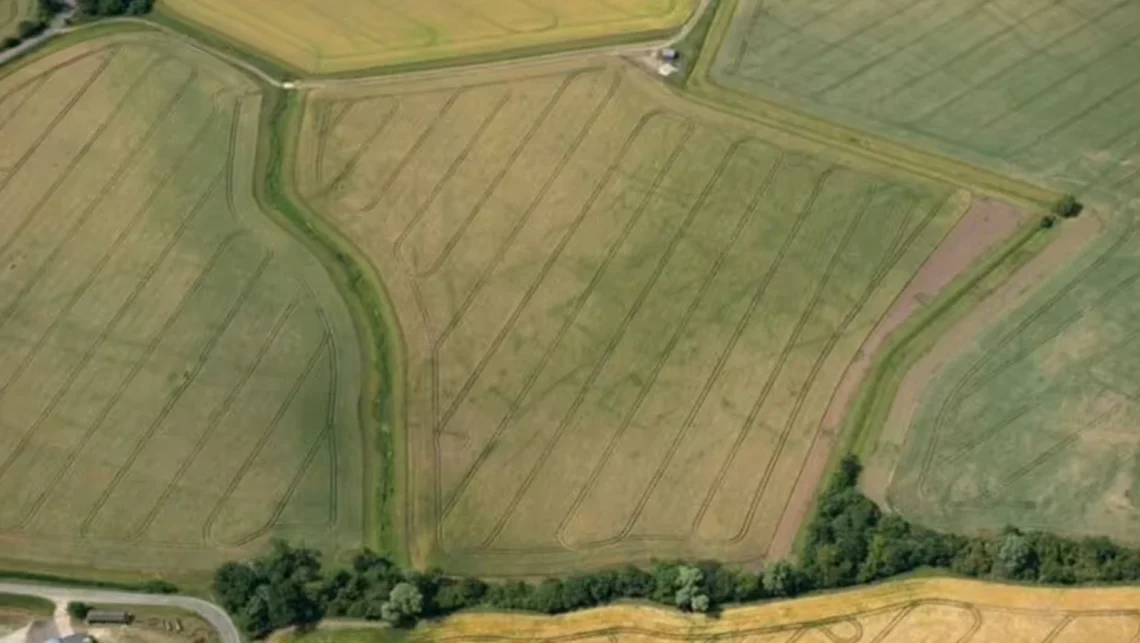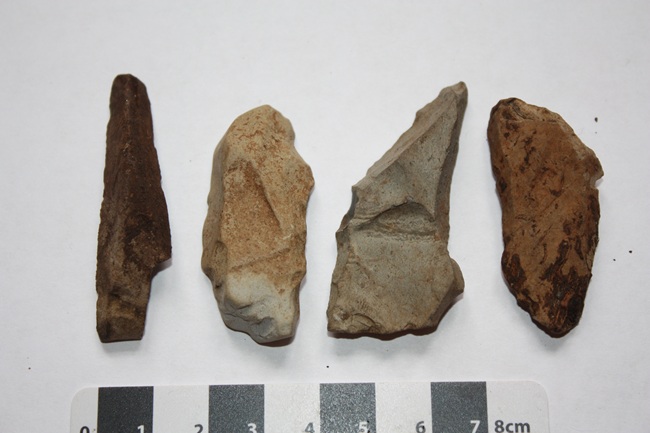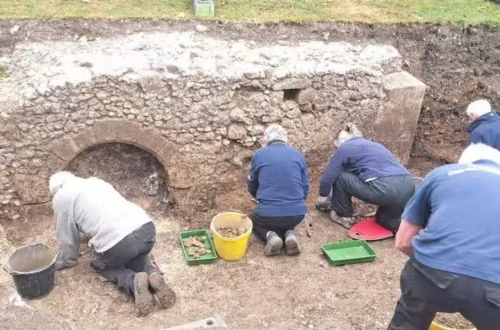Greek politicians and archaeologists have voiced intense criticism following the collapse of a replica of the iconic Dolphin Fresco at the Palace of Knossos in Crete. The incident, which occurred on Friday, 16 May 2025, saw a section of the fresco reproduction in the palace’s eastern wing detach due to strong winds during a storm, raising concerns about the maintenance of this renowned archaeological site. The Dolphin Fresco, dating to the Minoan period around 1500 BCE, is one of the most recognisable artworks from Knossos. It depicts vibrant dolphins in a marine scene. The collapsed section was a modern replica…
-
-
Archaeologists have uncovered fossilised remains of Homo erectus dating back 140,000 years in a submerged river valley off the coast of Java, Indonesia. The discovery, made during underwater excavations, includes skull fragments and other skeletal remains, shedding new light on the life and environment of this early human species in ancient Sundaland. This now-submerged landmass once connected Southeast Asia. The fossils were found in a region that was likely a fertile river valley during the time of Homo erectus, before rising sea levels inundated the area. The remains suggest these early humans lived in a diverse environment, possibly exploiting coastal…
-
Archaeologists in Varberg, Sweden, have discovered six historical shipwrecks during investigations for the Varbergstunneln project. The finds, located near the original shoreline in southwest Sweden, range in age from the Middle Ages to the 17th century, offering new insights into the region’s maritime history. The discoveries were made by teams from the Bohuslän Museum, Visual Archaeology, and Cultural Environment Halland, as part of preparatory work for the tunnel construction. The shipwrecks were found in an area historically significant for maritime activity, close to Varberg’s coastline. The vessels vary in age, with some dating back to the medieval period, providing a…
-
A remarkable 2,600-year-old stone relief depicting King Ashurbanipal, the last great ruler of the Assyrian Empire, alongside major deities, has been discovered in Nineveh, modern-day Iraq. Uncovered during excavations at the North Palace, this intricately carved panel offers a vivid glimpse into Assyrian royal propaganda and religious symbolism, shedding new light on one of history’s most powerful empires. Nineveh, the ancient capital of the Assyrian Empire, was a sprawling metropolis in its heyday, renowned for its grand palaces and cultural achievements. The newly discovered relief, found during archaeological work led by Iraqi and international teams, including researchers from Heidelberg University,…
-
On 11 July 2025, the Yorkshire Museum will unveil Viking North, a stunning exhibition that brings the Viking Age in Northern England (866–1066) to life. This is one of the most significant collections of Viking artefacts ever displayed outside London, packed with rare finds and fresh insights into a transformative era. Viking North showcases a remarkable array of objects, many of which are in public view for the first time. The exhibition features the Yorkshire Museum’s renowned collection alongside the Vale of York hoard—a breathtaking cache of Viking silver, coins, and jewellery co-owned with the British Museum. Exclusive loans, including…
-
A new study published in the Journal of Archaeological Science has found that sledge-pulling dogs develop unique skeletal changes, offering a way to identify their historical role in Arctic communities. The research, led by Dr Louise Pionnier, examines entheseal changes—modifications where muscles or tendons attach to bones—and could shed light on ancient human-canine relationships. The study analysed a small but carefully selected sample of dog remains, including modern sled dogs like Alaskan Malamutes and Siberian Huskies, and archaeological specimens from Arctic sites. Due to the scarcity of well-preserved remains, the limited sample size requires cautious interpretation. Researchers focused on entheses…
-
A recent archaeological excavation at Gullberg Fortress in Sweden has uncovered a fascinating array of artefacts, including a distinctive dagger known as a ‘bollock dagger’ or a ‘ballock dagger’. The findings shed light on medieval life and offer a glimpse into the fortress’s history as a strategic stronghold. Located in Västra Götaland, the 13th-century fortress has revealed these objects during ongoing digs by the University of Gothenburg, sparking interest in their historical and cultural significance. The excavation in spring 2025 unearthed several well-preserved items buried in the fortress’s soil. Among them is a bronze dagger, approximately 20 centimetres long, with…
-
A significant archaeological discovery in Cambridgeshire has halted plans for a proposed solar farm, highlighting the tension between the United Kingdom’s net-zero ambitions and the preservation of its historical heritage. The remains of a well-preserved Roman town, uncovered during survey work for the East Park Energy solar farm and energy storage project near Great Staughton, have been granted heritage protection status as a scheduled monument, effectively blocking development on the site. This finding, announced in September 2024, highlights the importance of archaeological assessments in modern planning and raises questions about balancing renewable energy goals with cultural conservation. The discovery was…
-
Recent archaeological discoveries off the coast of Scotland have illuminated the remarkable journeys of prehistoric peoples who ventured to the far northern reaches of the British Isles around 10,000 years ago. Submerged stone tools and possible structural remains found near the Isle of Skye suggest that early humans, likely Mesolithic hunter-gatherers, braved challenging conditions to settle in regions previously thought to be sparsely populated. This finding, reported by the University of Glasgow, challenges assumptions about the extent of prehistoric human migration and highlights the resilience of our ancestors. Archaeologists from the University of Glasgow, led by Professor Karen Hardy, have…
-
In a remarkable find, researchers at Cambridge University Library have discovered fragments of a rare 13th-century manuscript containing medieval tales of Merlin and King Arthur. Hidden for centuries within the binding of a 16th-century ledger, these parchment fragments offer a fresh glimpse into the Arthurian legend, shedding light on its medieval French origins. Digitised through a groundbreaking three-year project, the manuscript is now accessible to scholars and the public, marking a significant moment in literary and historical research. The manuscript fragments were found by an archivist examining the binding of a 16th-century estate register. The parchment, dating to around 1300,…



